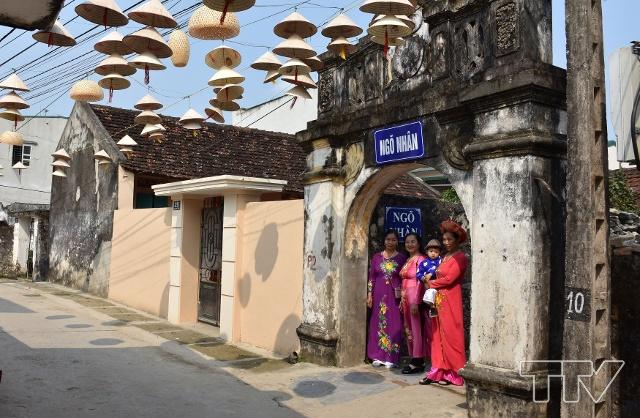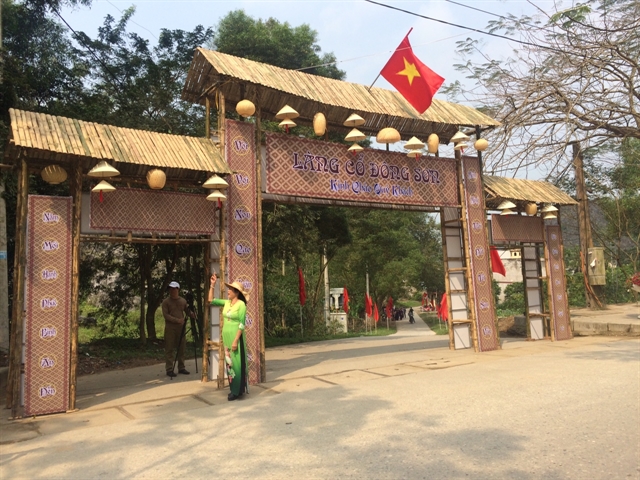 Life & Style
Life & Style


|
| One of the ancient houses in Đông Sơn Village in Thanh Hóa City. Photoqdnd.vn |
THANH HÓA Cultural authorities in the central province of Thanh Hóa plan to restore and preserve Đông Sơn ancient village in Thanh Hóa City’s Hàm Rồng Ward.
The provincial Department of Culture, Sports and Tourism announced the plan starting in May, initially focusing on a research project on the cultural relic.
The work will be carried out following an instruction of the Thanh Hóa Province’s People’s Committee and the Ministry of Culture, Sports and Tourism to boost cultural and tourism activities in the province.
Surrounded by the Rồng (Dragon), Voi (Elephant) and Hùm (Tiger) mountains and the Mã (Horse) River, the village with its peaceful beauty, historical architecture and archaeological relics is one of the most beautiful ancient villages in Việt Nam.

|
| Đông Sơn Ancient Village has been recognised as a target to boost tourism development in Thanh Hóa Province and thus needs effective protection, according to the provincial authority. Photo vietnamhoinhap.vn |
In March last year, provincial authorities launched a tour to the village to preserve and promote cultural values and create an interesting tourism product in the province.
Joining the tour, visitors can learn about Đông Sơn culture dating back to the peak of the Bronze Age and early Iron Age (from 400BC to AD300), experiencing historical tourism destinations including the national relic of the Lê Uy - Trần Khát Chân Temple, Đông Sơn archaeological relics, Đông Sơn Pagoda, and a more than 200-year-old ancient house.
Bronze artefacts such as Đông Sơn bronze drums, tools, weapons and utensils have been found at archaeological sites.
With more than 370 old houses including those of 200 years old, the village features alleys, temples, pagodas, caves and wells.
In 2013, the Government approved a decision on the overall planning for preserving, restoring and promoting the value of Hàm Rồng historical and cultural relic complex, including the ancient village of Đông Sơn in Thanh Hóa.
However, five years after the Government's decision, local authorities and people in the village were struggling to set up effective measures due to increasing obstacles in coping with natural disasters and a lack of co-ordination and comprehensive plan.
In February last year, the provincial People's Committee decided to recognise Hàm Rồng cultural-historical site, including Đông Sơn Village, to boost tourism development.

|
| The entrance gate to Đông Sơn Ancient Village in Thanh Hóa City. Photo vietnamhoinhap.vn |
The province requested the Thanh Hóa City People’s Committee be responsible for preserving and developing the village’s tourism resources, at the same time, protecting the environment in and around the village to create favourable conditions for attracting tourists and ensure the participation of the local community in tourism activities.
Historical story
Since the beginning of the 20th century, the name Đông Sơn has been well-known as an archaeological culture. Due to its thousand years of history, the village has the structure of purely agricultural villages, featuring the most typical architecture of northern villages.
The history of the village is associated with the upheavals of Thanh Hóa and reflects the development of the locality from the time of Hùng Kings to the modern age.
The villagers have divided the village into sub-regions for practices of different cultural activities such as the Văn (literature) for ancient script learners, Võ (martial arts) for those who want to learn and serve in the military, and Nhạc (music) for music study and performances.
They hold an annual festival with a wide range of rituals on the third day of the third lunar month in commemoration of the village founder and ancestors. VNS




